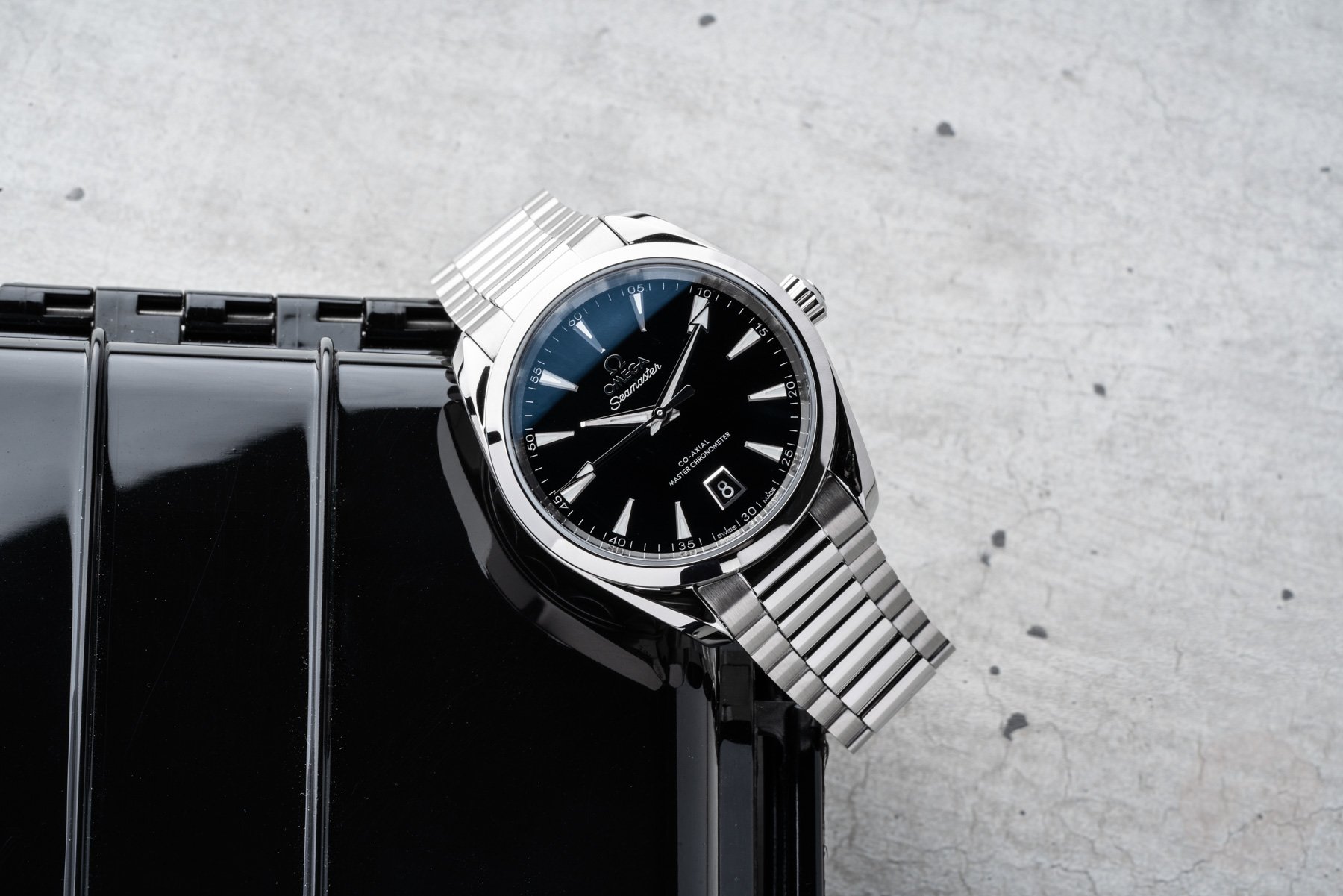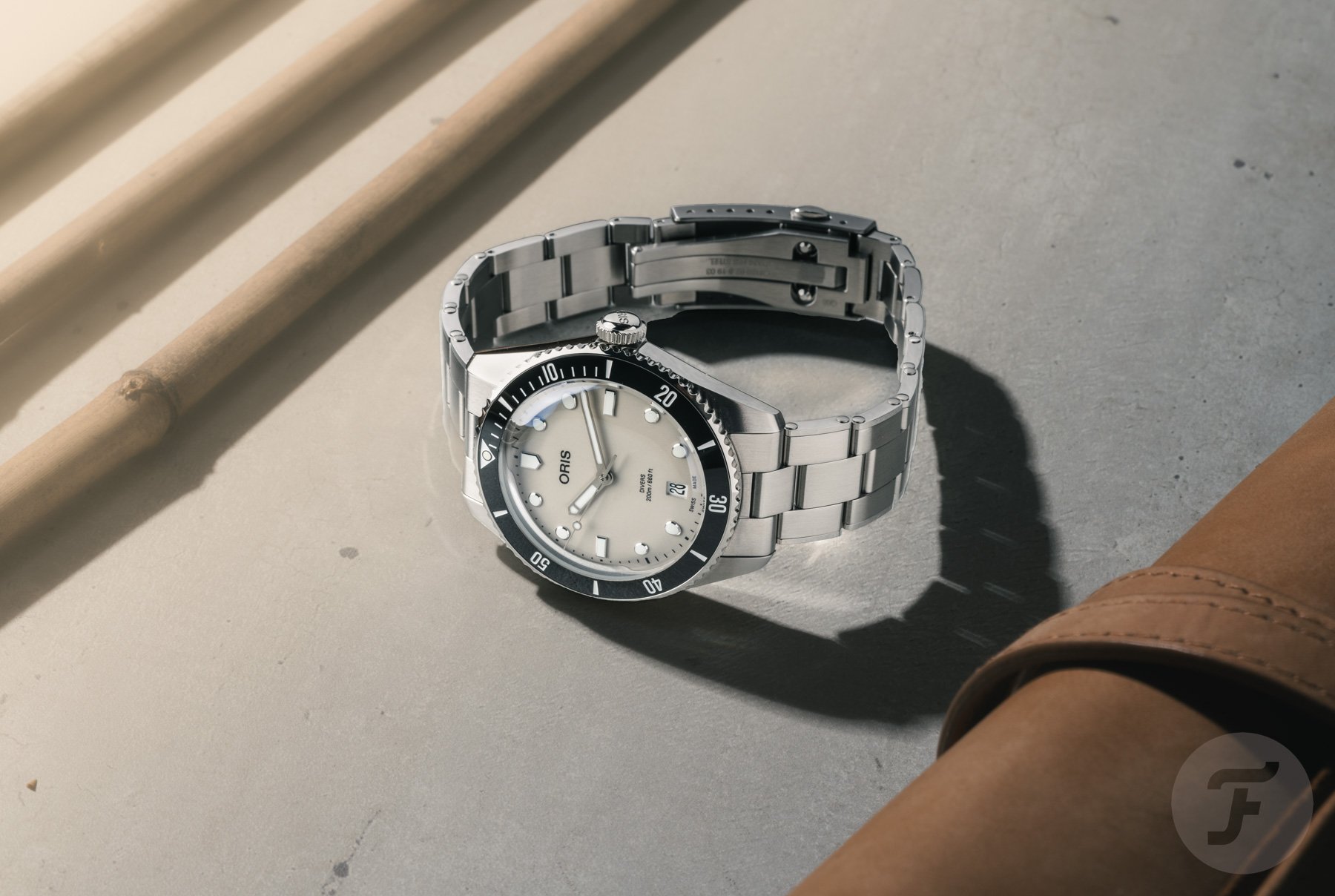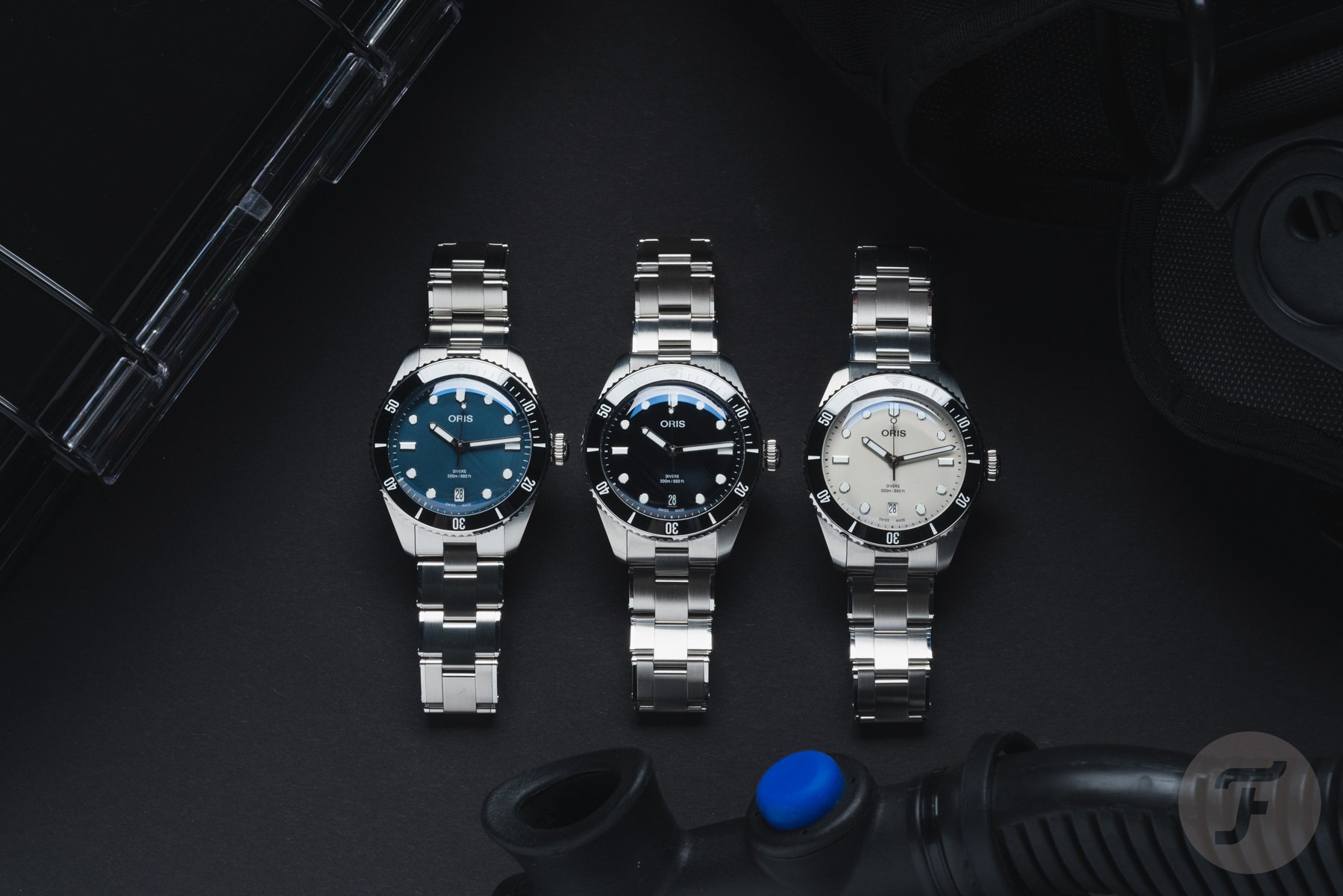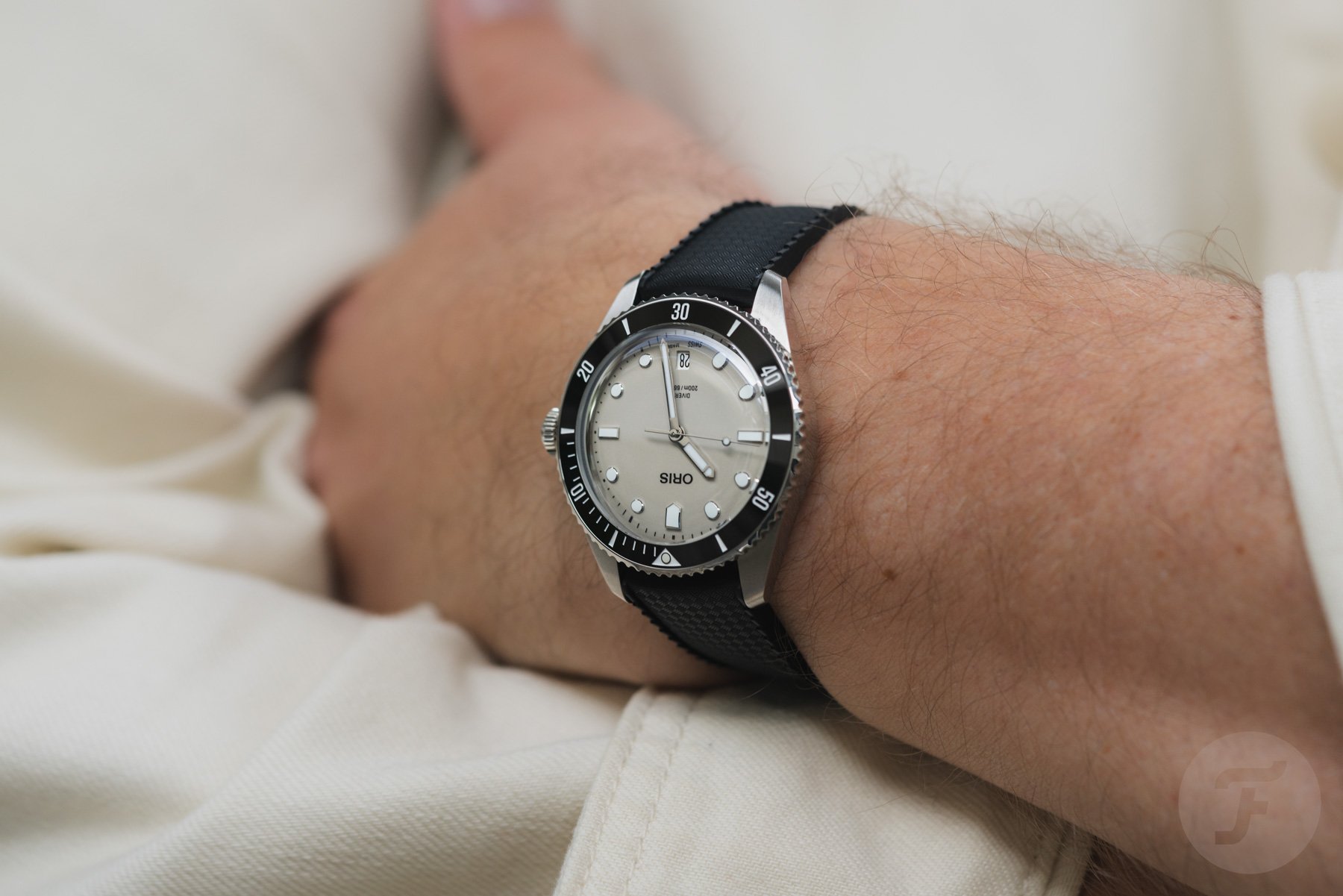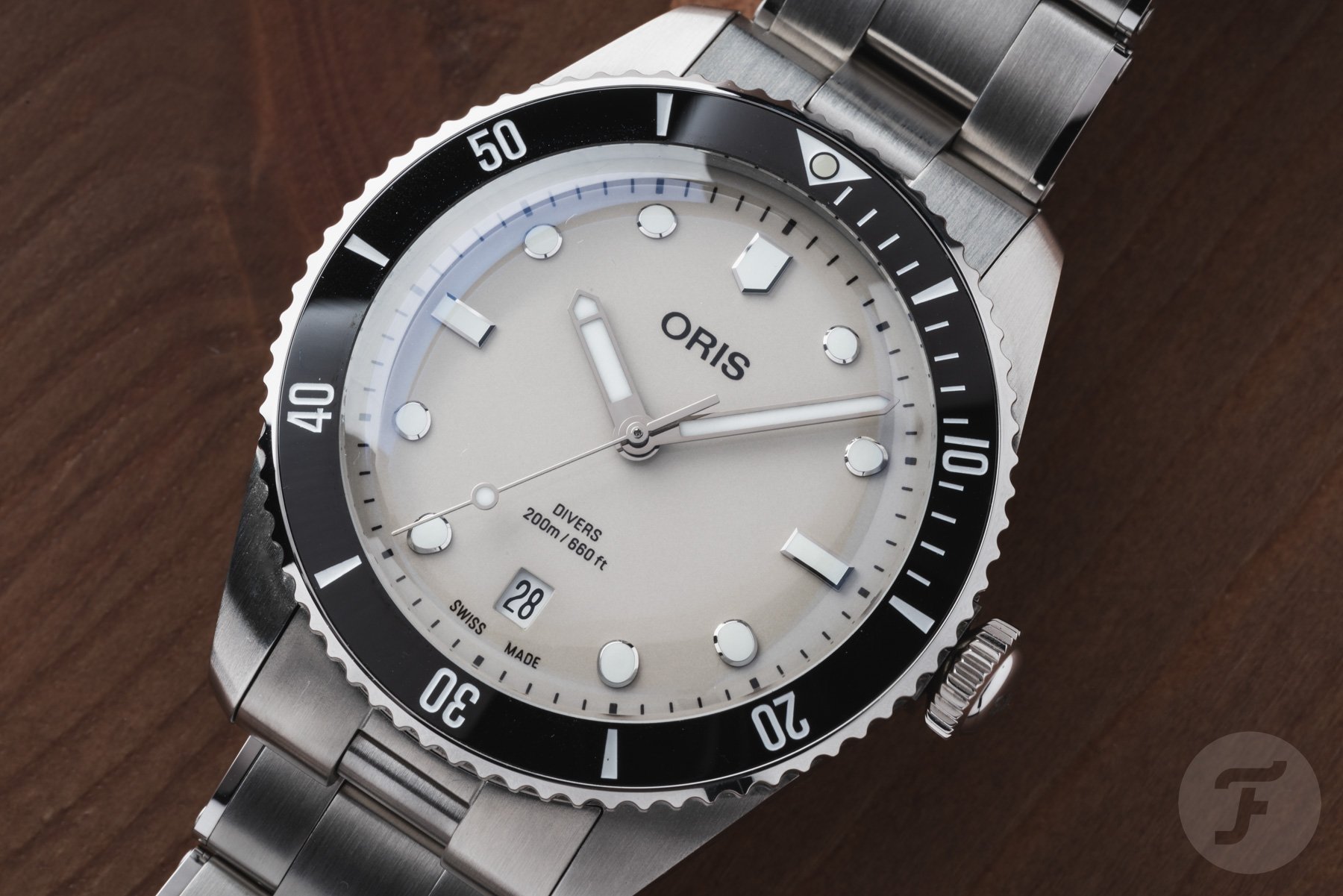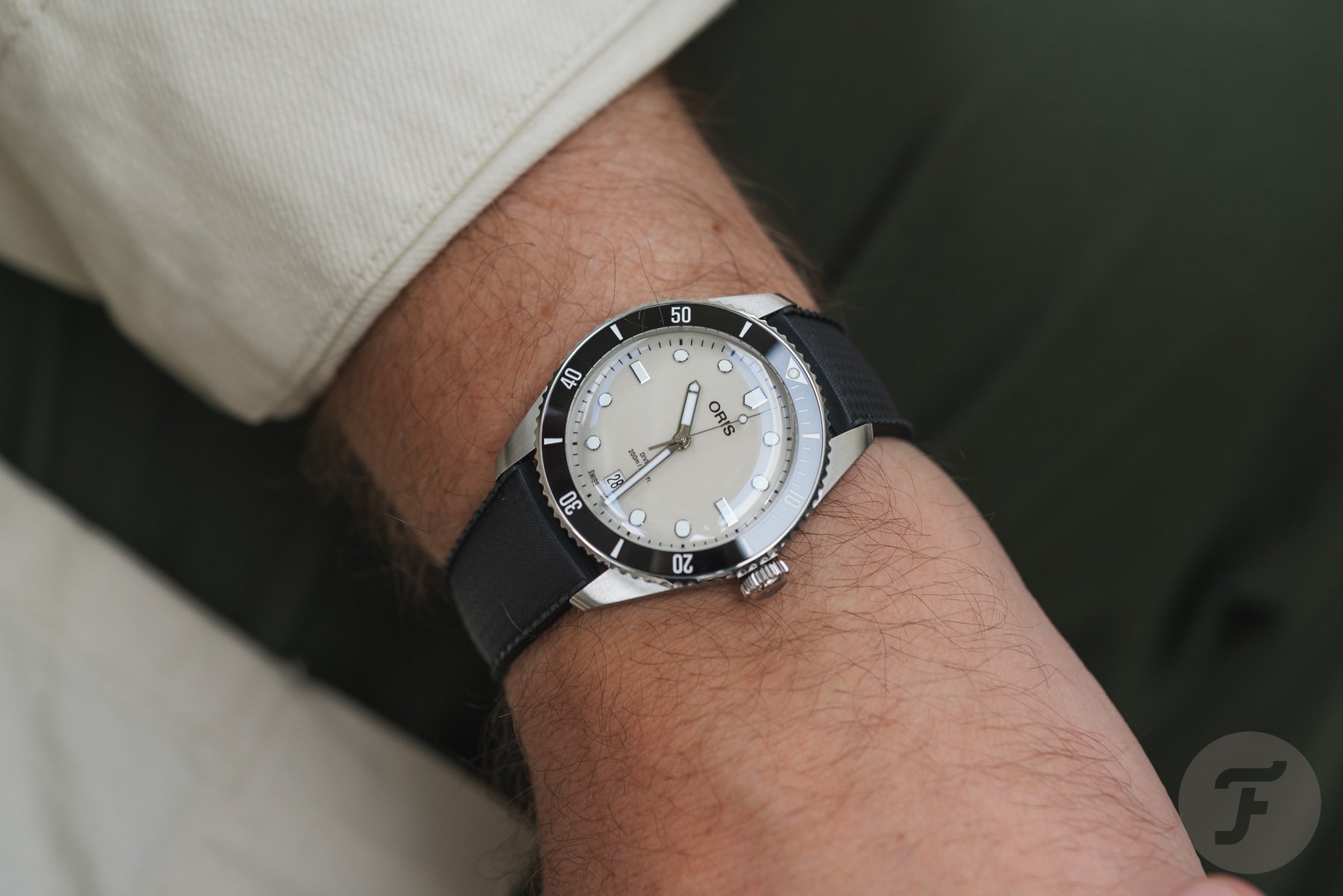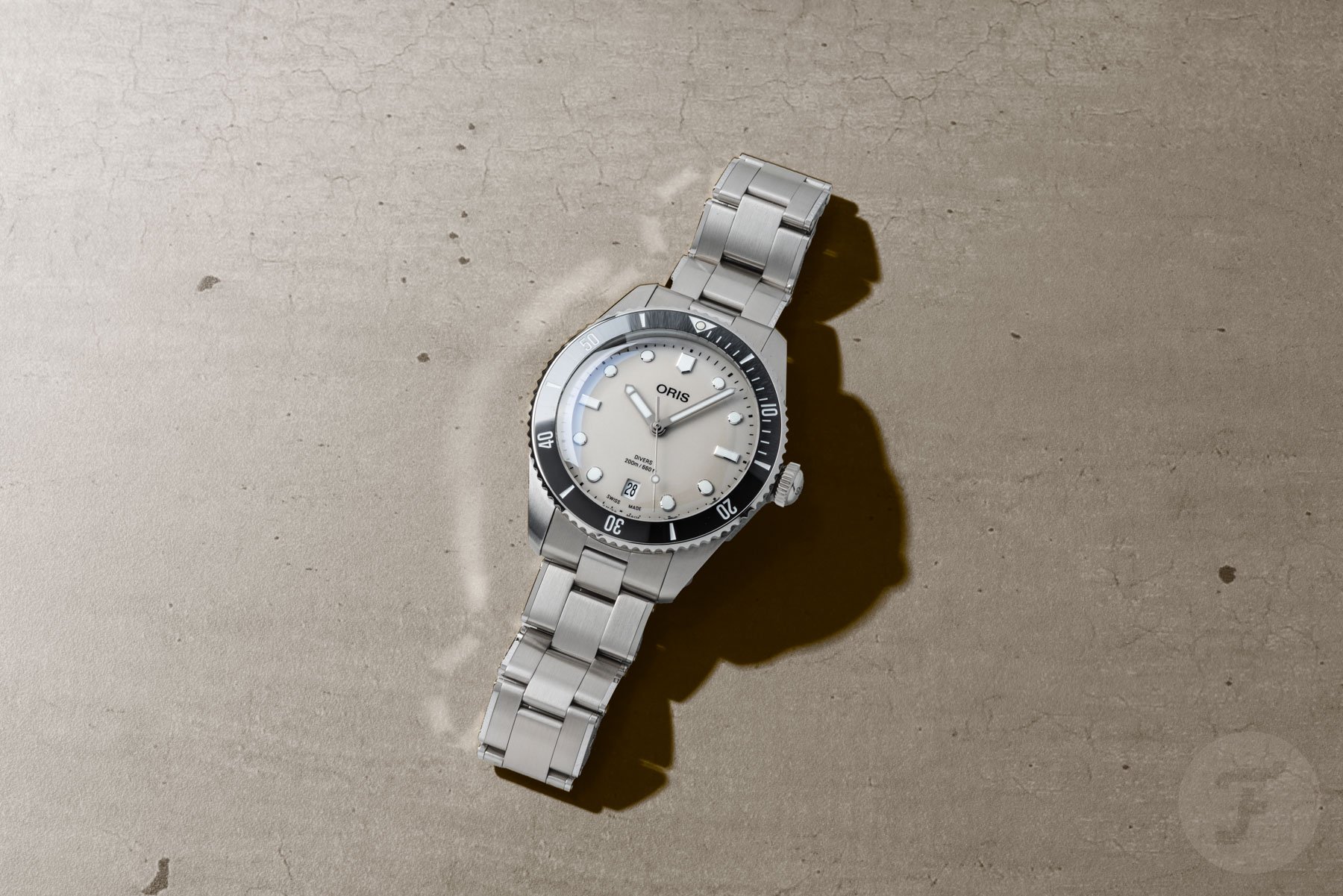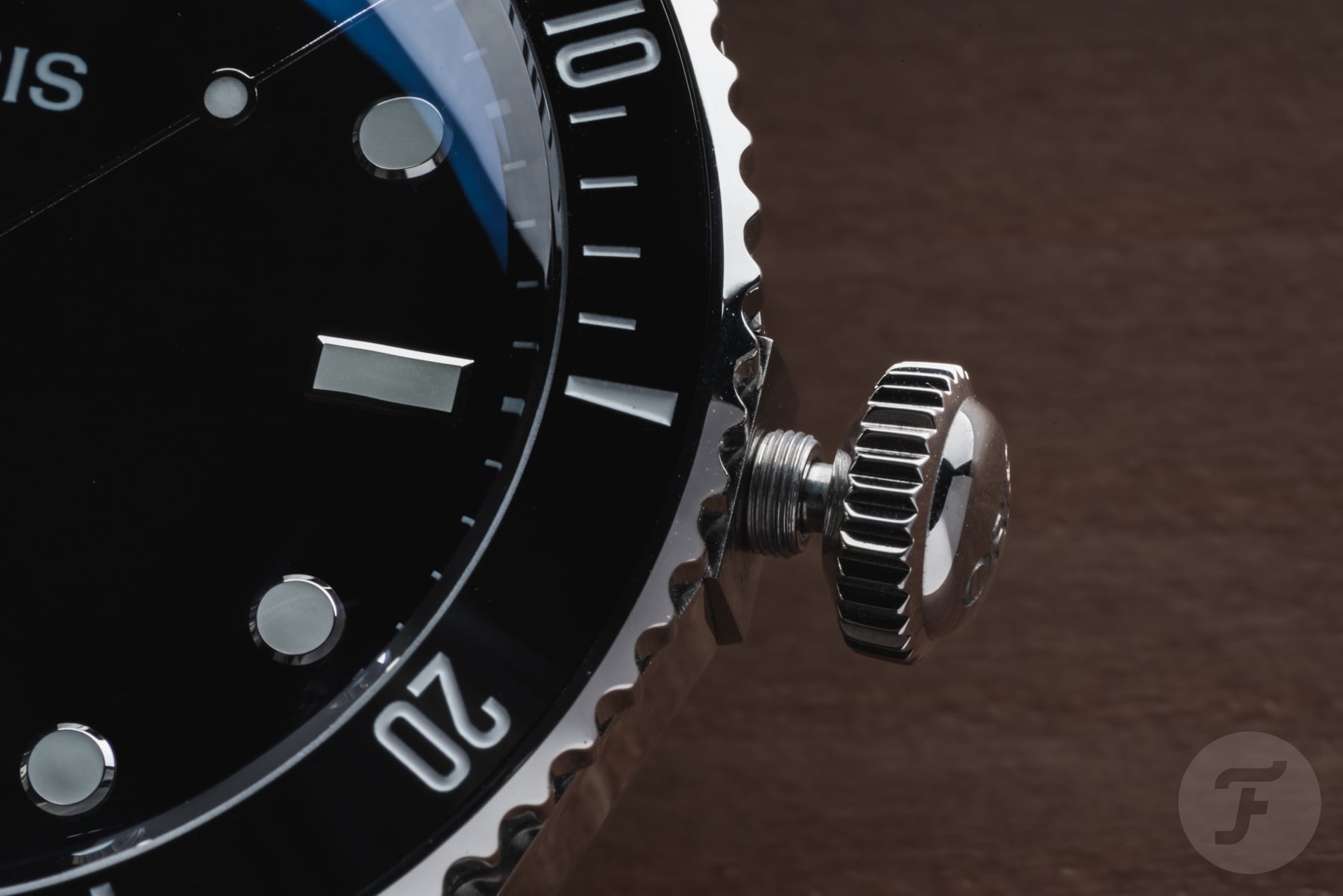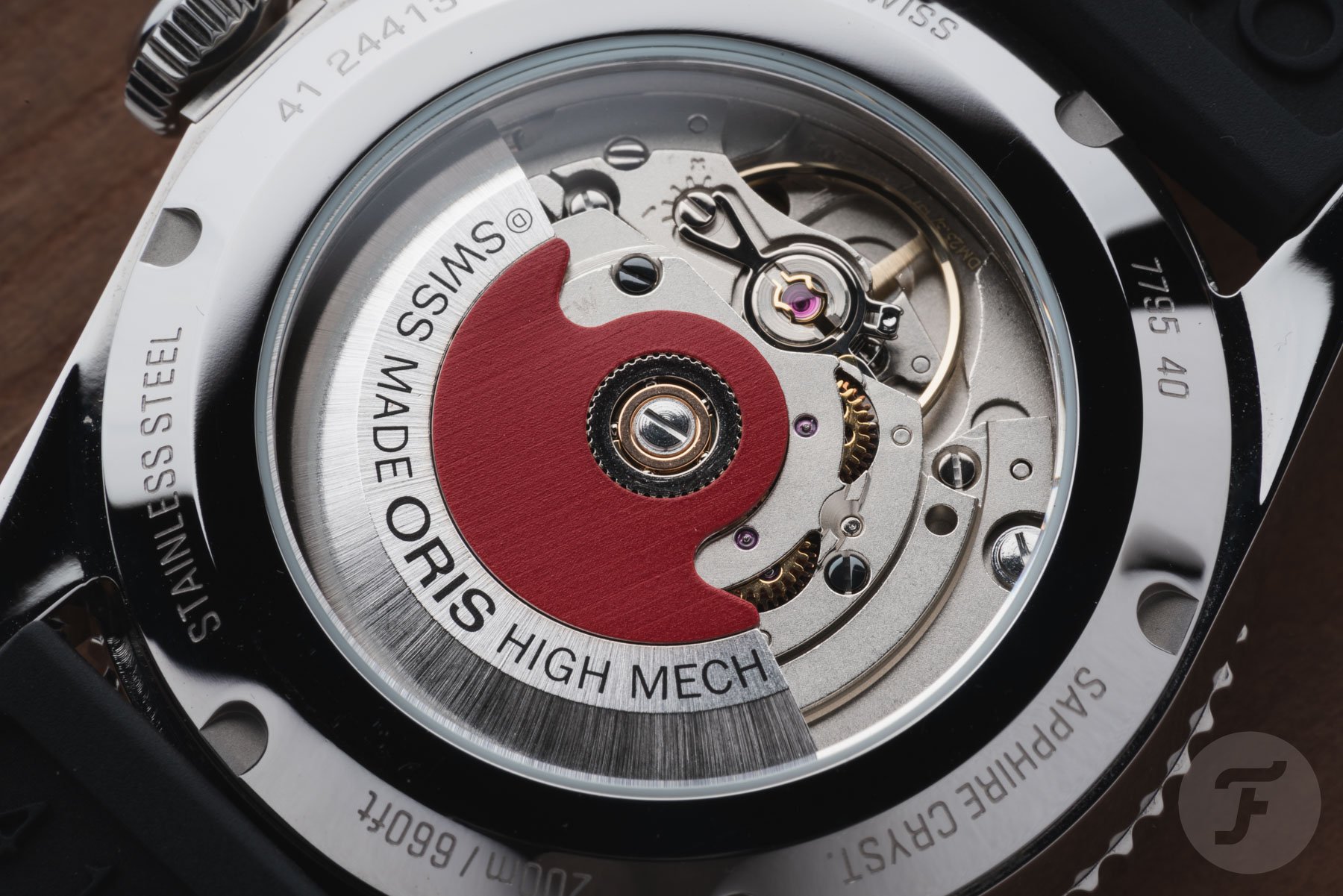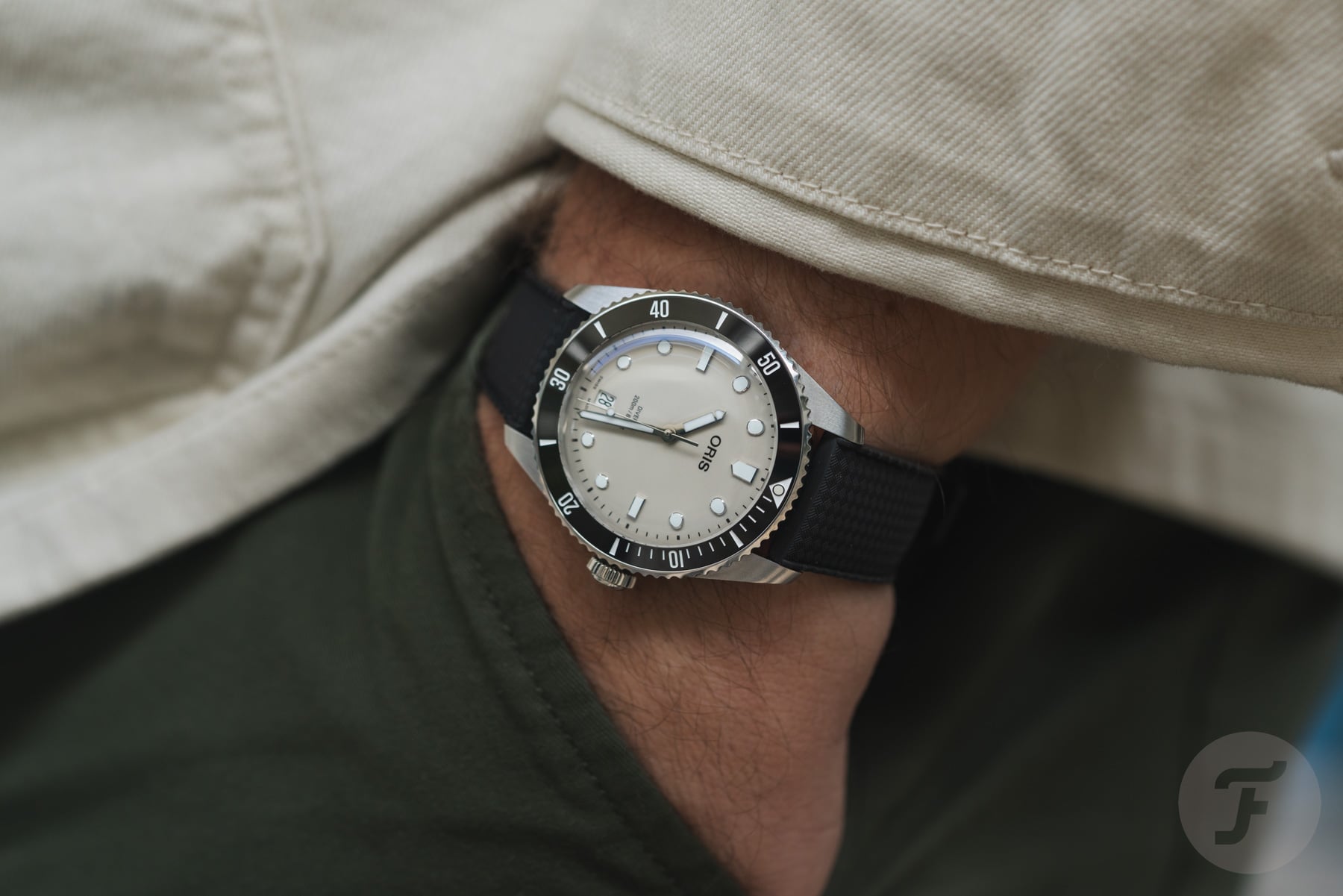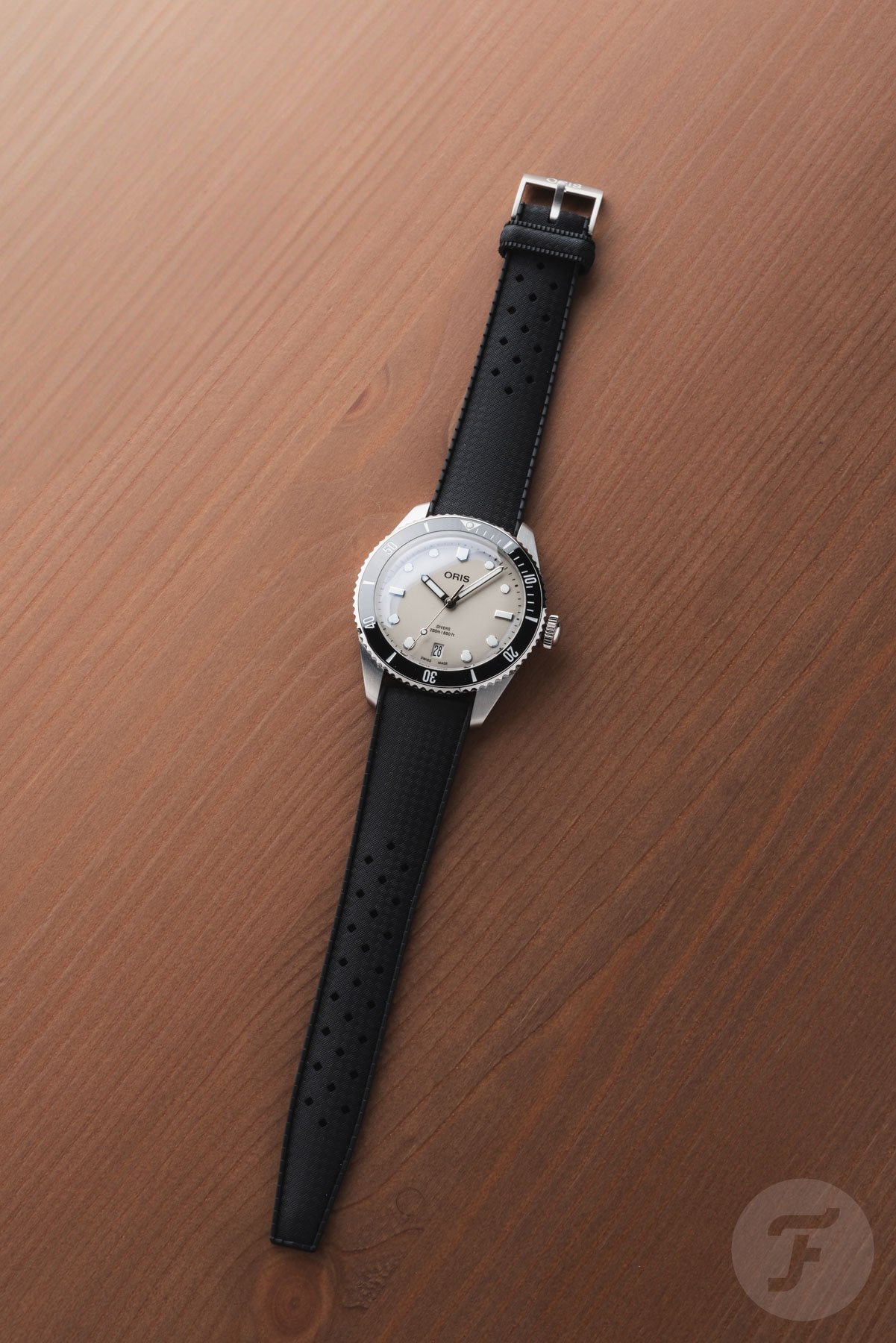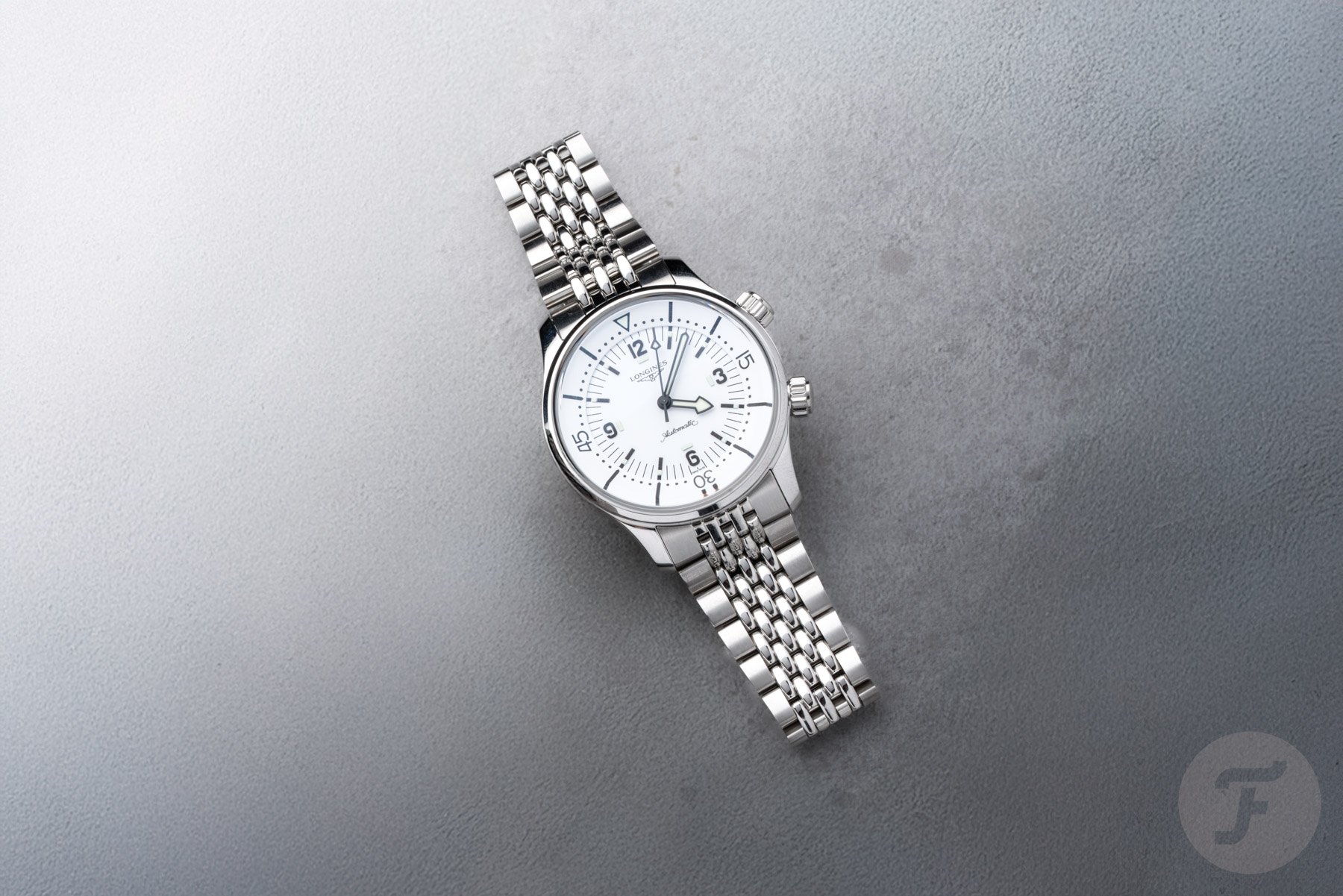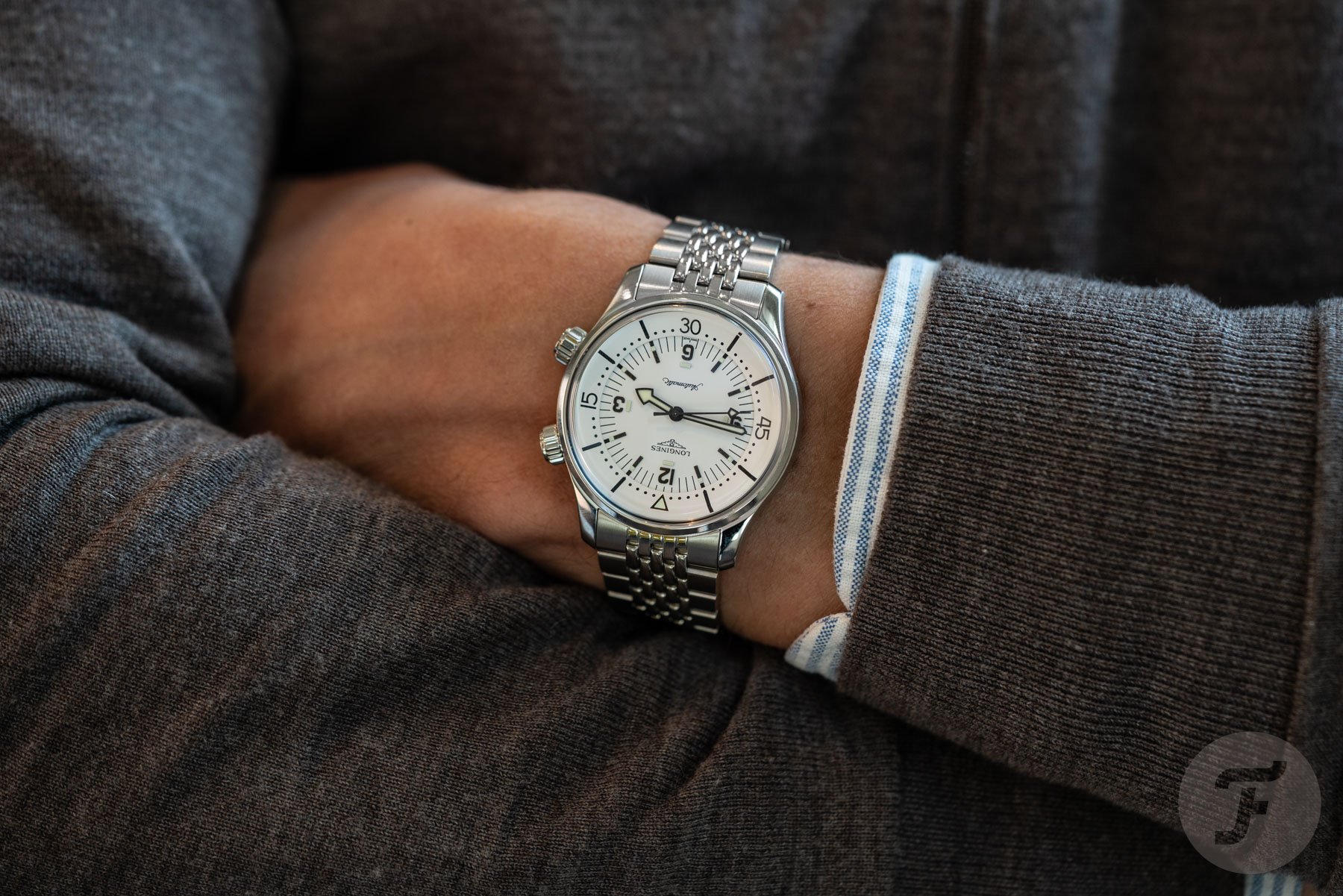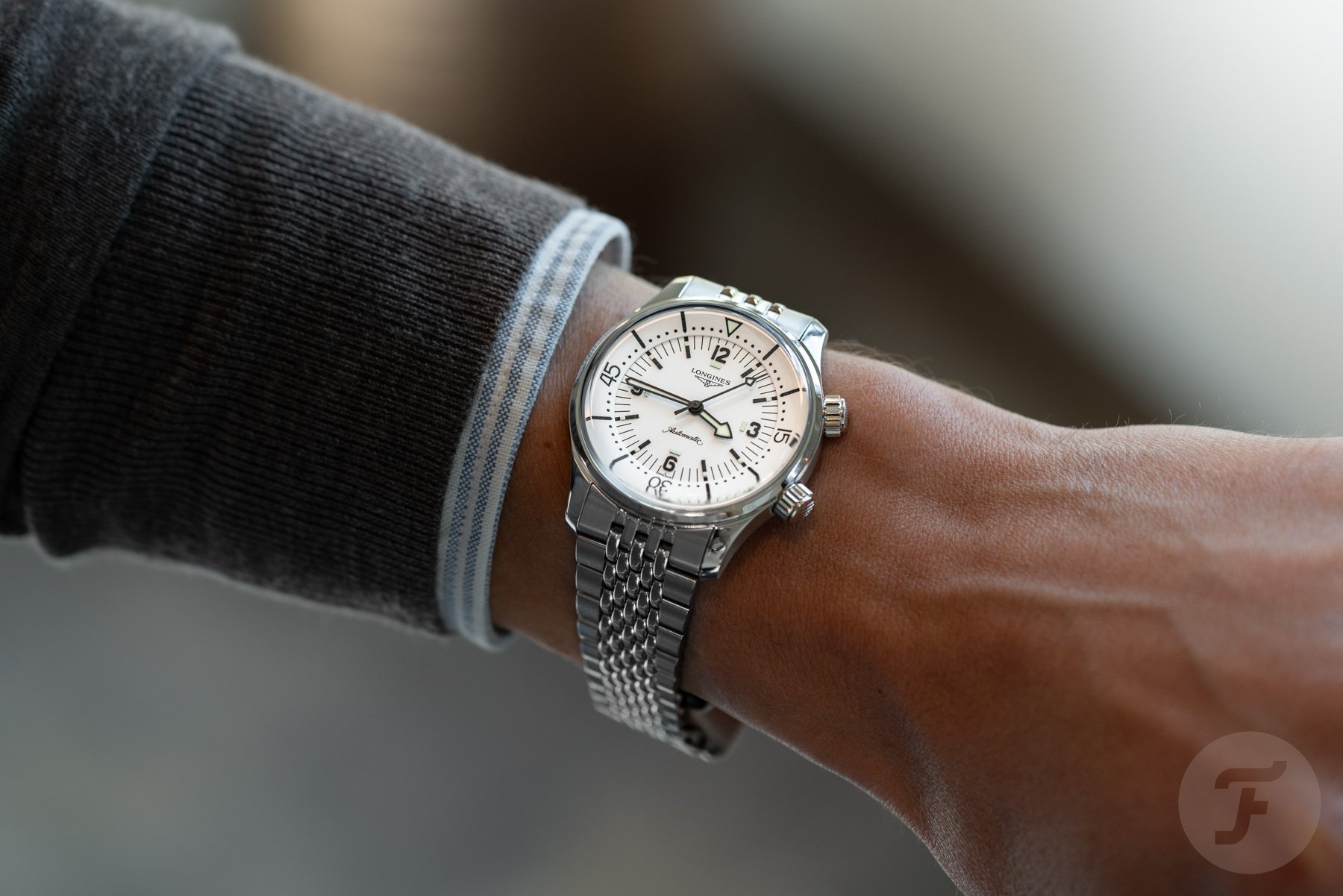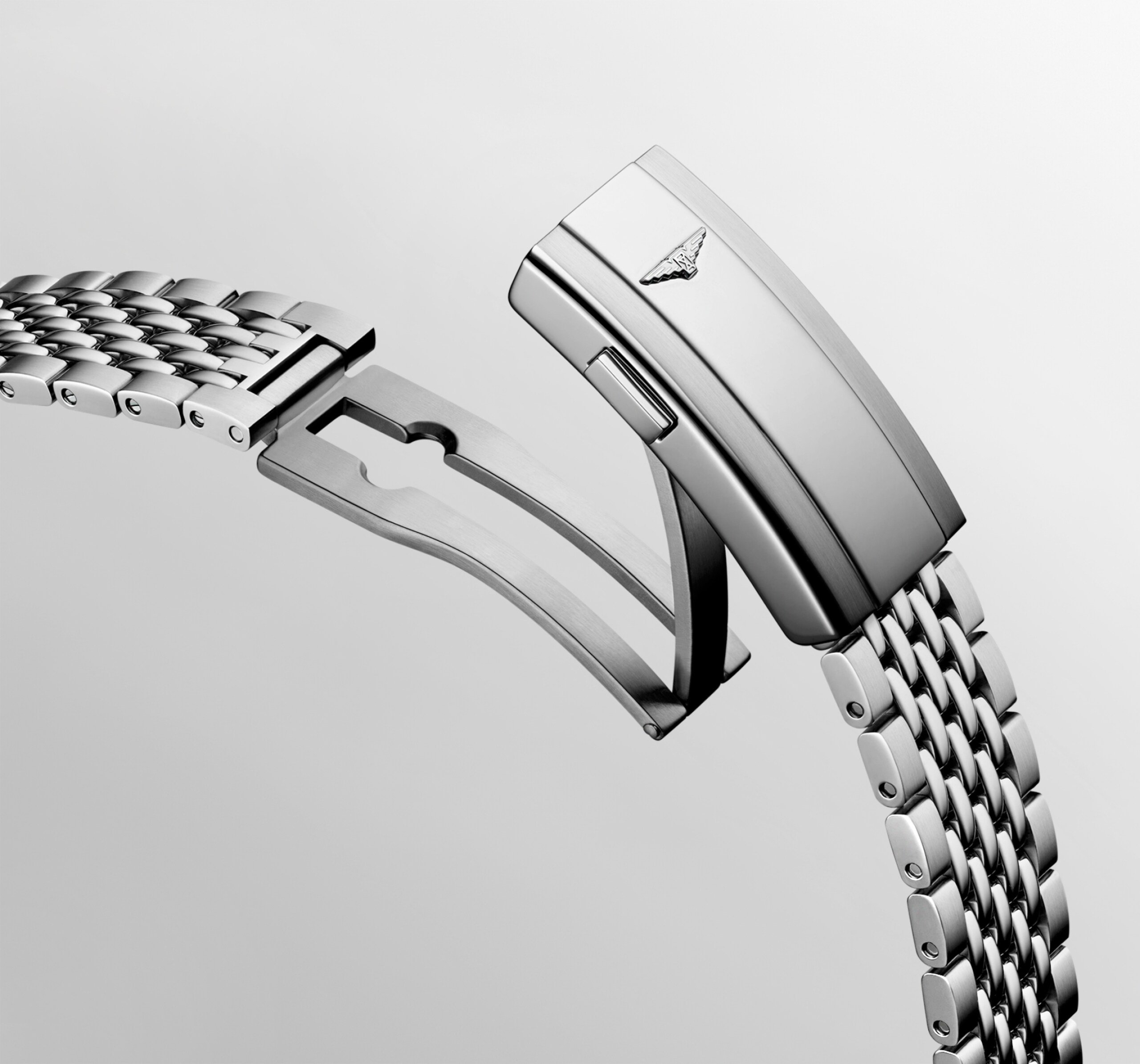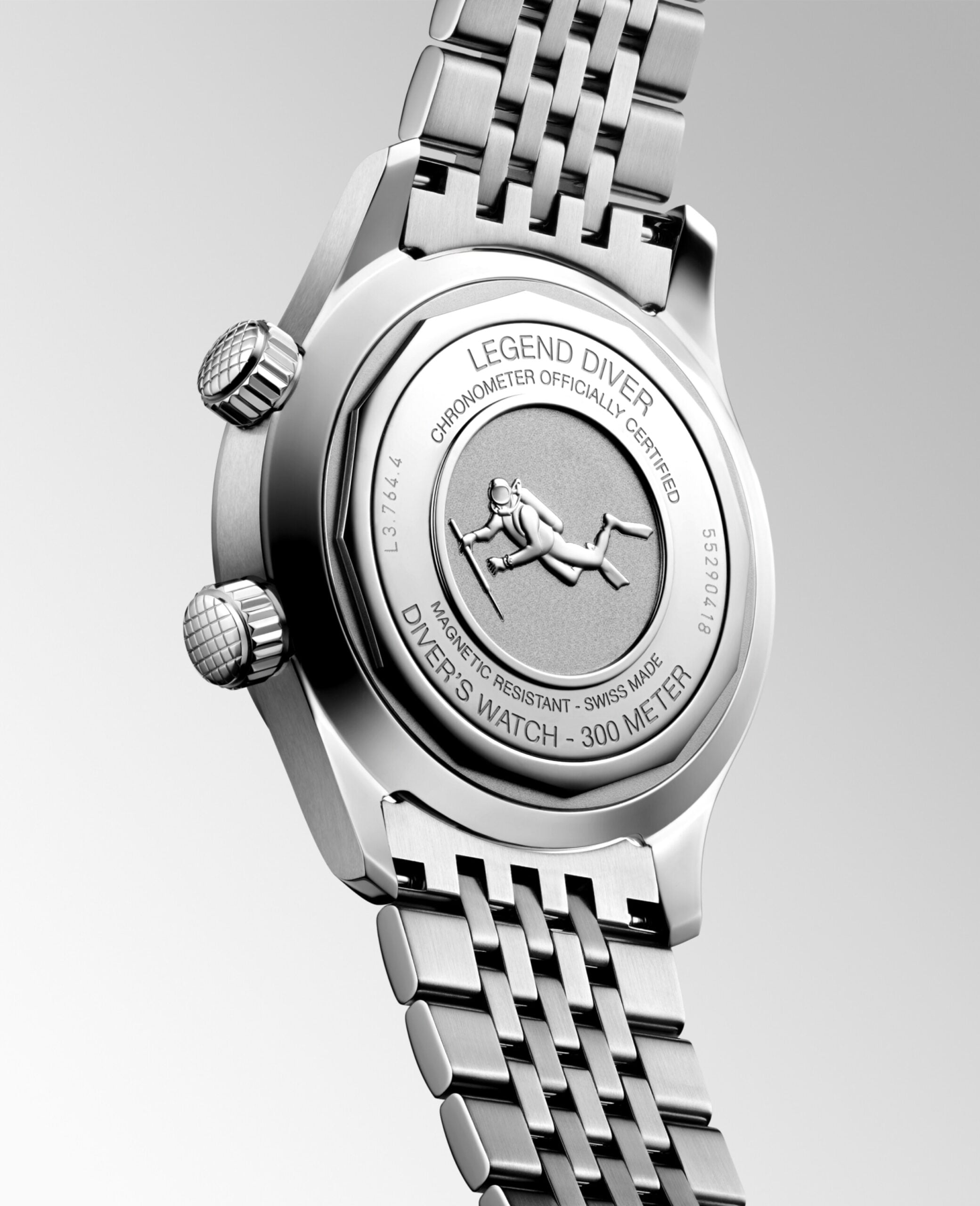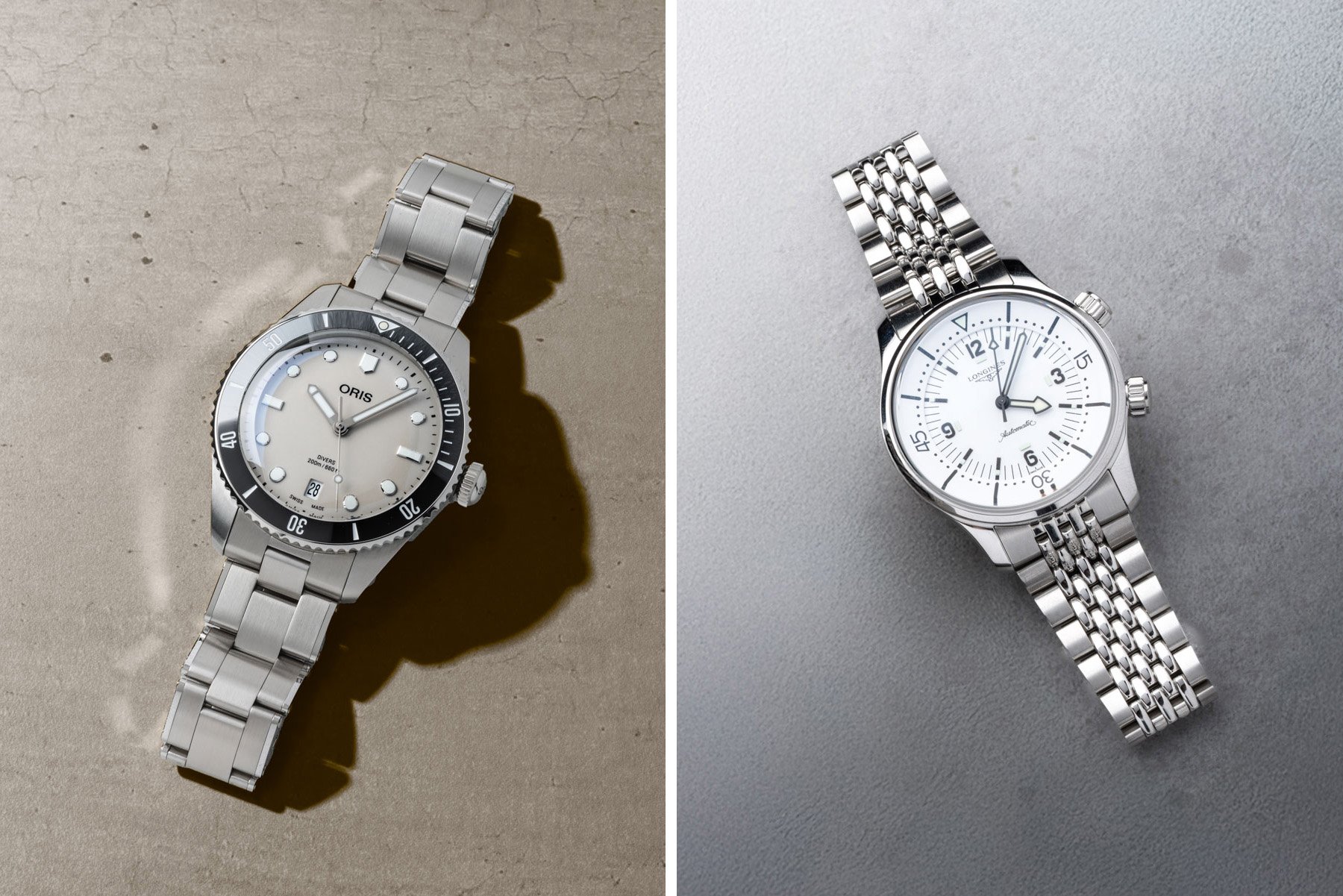Sunday Morning Showdown: Oris Divers Date Vs. Longines Legend Diver
Another Sunday morning, another showdown. Grab your hot cup of coffee and get ready to vote! This week, it’s all about popular retro dive watches. One is the recently released white-dial Longines Legend Diver. It was met with much praise from media and fans alike as a brighter alternative to the black- and blue-dial options. Can it beat our other pick, the Oris Divers Date? The Divers Date debuted late last year and also garnered praise upon its release. Ever since then, however, it has been a bit quiet. This creates a perfect opportunity to determine whether it can beat the latest Longines Legend Diver. It’s time to find out!
When the white Longines Legend Diver was unveiled a little over a week ago, fans agreed it was a nice and crisp new version of the brand’s vintage-inspired diver. White dials are not the most common among dive watches, so when we do see them, they usually stand out immediately. But it was not all praise for the latest Legend Diver. As usual, some people thought it was not worth the price. This sparked our idea to pit it against another recently introduced retro diver with a light dial. We decided to go for the Oris Divers Date with a beige dial. It creates a slightly more nuanced feel to a light-dial diver. Plus, the Oris comes in at €2,450, whereas the Longines has a steeper price of €3,800. A different dial color and vastly different price tags are ingredients for a great Sunday Morning Showdown. Let’s get going.
Last week, on Sunday Morning Showdown…
But before we do, let’s briefly look back at last week’s all-Omega battle. With 65% of the votes, the 38mm Aqua Terra had no trouble beating the recently released Railmaster. The comments made it very clear that the Aqua Terra was your favorite. Despite the €1,000 price difference, not many Fratelli would pick the new Railmaster. Let’s see how things pan out with the Longines and Oris this week. It’s time for Mike and Jorg to make their cases.
Jorg: Oris Divers Date
Today’s battle is about more than just a price tag or dial color. It is also a battle of two distinctly different dive-watch styles. The Longines represents the classic Super Compressor-style dive watches, while the Oris takes the more conventional route that has become the standard for the genre. Is that important? As a general principle, it’s not, but it does create an instant preference for me. I like my dive watches to combine a clean dial with an external bezel rather than an internal one. That said, I do like the Longines Legend Diver quite a bit. We have also seen great examples from Sherpa that show how good a Super Compressor-style diver can look. Overall, though, I like standard dive watches better as they show greater versatility.
In today’s matchup, both watches sport vintage-inspired looks, so they have a particular throwback charm. But a couple of important details make the Oris Divers Date an instant favorite for me. The first is its well-chosen dial color. It’s no secret that if given a choice between black or white dials, I prefer the former 99 times out of 100.
Exceptions are few and far between. It must either be a watch that looks phenomenal with a white dial, or the white dial itself must have a visual sparkle that wins me over. A great example is the white opaline dial of the Tudor Black Bay Pro. Compared to the matte black dial of the inaugural model, the new dial offers something completely different. That white opaline dial has a visual brilliance that instantly gives it depth and sophistication.
Icy-white dials leave me cold
That’s where it goes wrong with the icy-white dial of the Longines Legend Diver. Its crispness leaves me cold. It lacks soul and is far too sterile for me. On top of that, there is something off with the proportions of the dial and rotatable inner bezel. The latter covers a large part of the overall dial space that has to be “filled,” for lack of a better word.
From a functionality perspective, I understand that the bezel takes up quite a bit of space because one must be able to read the remaining dive time once underwater. But should that result in the bezel’s numerals and markers being significantly bigger than those on the dial? While the classic design makes the hour numerals fatter, the large numerals on the bezel still fight them for attention, so the hierarchy feels off.
The Oris Divers Date does a far better job in terms of overall balance, and I also prefer the dial color. The brand from Hölstein introduced three dials for the Divers Date. The first was standard black, while the second had a nice, saturated dark blue tone. Last, there was the one I picked for this battle, the powdery beige dial. As you can see, combining that color with crisp white lume on the hands and indexes creates a soft, beautiful contrast. Additionally, the applied hour markers each have a polished bevel for some visual attraction. The combination of elements makes for a layered look that I much prefer over the flat white dial of the Longines Legend Diver.
Nice updates for the Oris Divers Date
Another thing I like is the ceramic bezel insert with its white markings and numerals. This is a welcome feature of the Divers Date trio that makes the watches a great step forward compared to the Oris Divers Sixty-Five. Some people prefer the aluminium inserts of those models, but I think the ceramic bezel with the engraved markings and numerals looks great.
Oris also nicely updated the case. It is 1mm smaller than the 40mm Divers Sixty-Five, but the overall proportions of the case and the rivet bracelet make for a watch that wears like an absolute charm. It’s also thinner and more comfortable than the Longines Legend Diver.
The automatic Sellita SW200-1
For the movement, Oris decided to stick to the Sellita SW200-1 with the characteristic red Oris rotor for now. As most of you will know, it is based on the ETA 2824. The Longines caliber L888 is based on the more premium ETA 2892, which is a plus. However, the Legend Diver is also significantly more expensive. As a next step, Oris will surely introduce the same watch with its proprietary Caliber 400 in time, making it even more interesting. That will bump up the Divers Date’s price, but it will likely still cost less than the €3,800 Longines.
For now, the Sellita-powered Divers Date costs €2,450. The brand chose this route to attract a large audience to the Divers Date. Additionally, it is worth mentioning that the Divers Date, despite all the updates, has not become more expensive than the Divers Sixty-Five. In a world where watch brands look for any excuse for a price hike, that is worth a compliment.
Considering all this, I would pick the more affordable Oris Divers Date over the Longines Legend Diver any day of the week. I think it looks better as a dive watch, has a more attractive colorway, and introduces updates compared to its predecessor that make it one of the most attractive dive watches at the €2.5K price point. These factors make the choice easy for me, but let me know why people should vote for the Longines Legend Diver, Mike.
Mike: Longines Legend Diver
The fact that Longines is still adding to the Legend Diver collection says something about the design’s longevity. I remember when the original reissue debuted in 2007 because my father purchased one. The watch came without a date function and, several years later, disappeared in favor of a date version. Since then, the brand has released numerous variants on the theme and added a 39mm case to the existing 42mm options. We’ve seen bronze, 18K versions, and loads of dial colors. Finally, a week ago, a white-dial version broke cover.
Admittedly, I’m more of a bog-standard, black-dial-dive-watch guy, but I can see the appeal of a lighter version. When almost everyone else is boring like me, why not opt for something different? Plus, a white dial is bright and less drab. Finally, when applied to a watch as good as the Legend Diver, it simply works.
A 39mm stainless steel case for all wrists
Thankfully, Longines chose to add a white dial to the 39mm Legend Diver. In addition to making the watch more wearable than the lengthy 42mm pieces, the color should find favor with women and men. After all, this Legend Diver has a comfortable 47mm lug-to-lug and a reasonable 12.7mm thickness, which is great considering the heady 300m depth rating.
The Legend Diver hits differently than a normal dive watch
The most obvious difference between the Legend Diver and the Oris Divers Date is the dive bezel. The Oris opts for a typical external rating bezel, whereas the Longines uses a second crown to adjust an internal 60-minute timer (a screw-down crown adjusts the time). This style and the cross-hatched pattern on each crown stem from the ’50s and ’60s EPSA Super Compressor cases used by many brands. The look allows the watch to perform double duty as a tool watch and as a slightly more elegant option. This is reinforced with the beads-of-rice bracelet.
A sweet bracelet
Oris makes a great bracelet, but it has met its match with Longines. The Legend Diver is equipped with a thin, comfortable beads-of-rice bracelet. It has a four-position toolless micro-adjust, which is handy during temperature swings. It’s also a nice example of a larger brand doing something right on an all-important part of a watch.
The automatic L888 isn’t overly fancy, but since it’s based on the venerable ETA 2892-A2, it’s more than suitable for a dive watch. It has a chronometer certification, a frequency of 25,200vph, and 72 hours of power reserve. There’s nothing wrong with the Sellita inside the Oris, but I consider the L888 a considerable upgrade. Whether the watch and movement make this watch worth 50% more than the Oris is going to be up to you!
And that’s where we stand. It’s time to vote for the Longines Legend Diver or the Oris Divers Date. Both are vintage-inspired, comfortable, and well-made watches. They also compete in the near-luxury segment, but there is a sizeable price difference. Will you choose to spend more on the Longines, or does the Oris meet your requirements? Cast your vote, and let us know why you chose the way you did.

